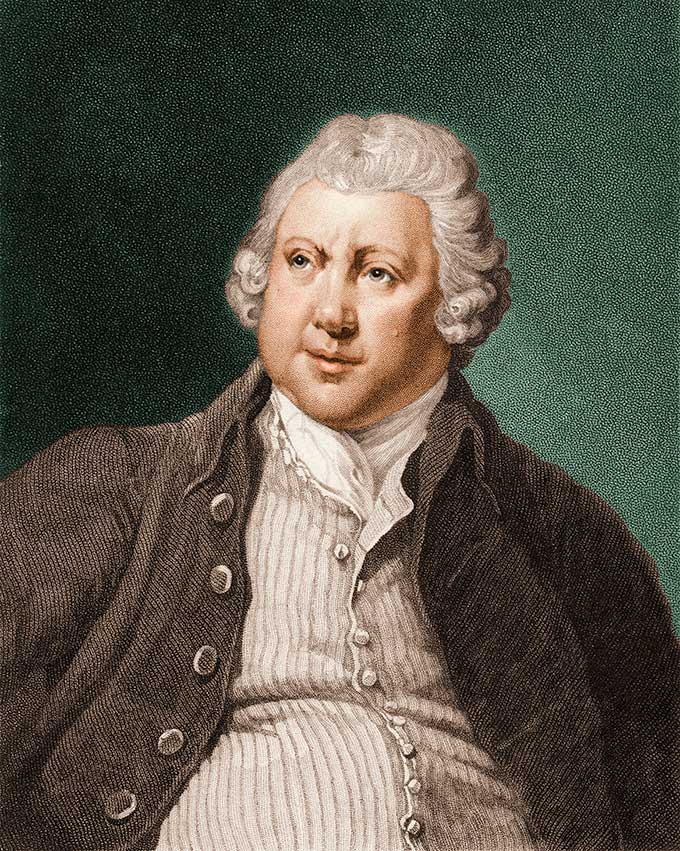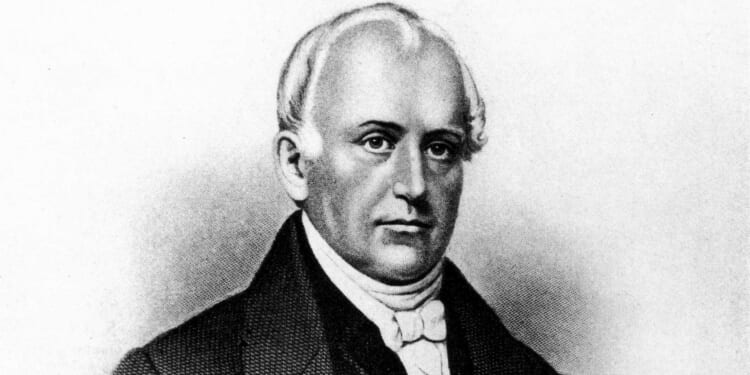In 1789, a 21-year-old man landed in New York. He was young, over six feet tall, and ready to take America by storm. Despite having grown up at a farm in the English Midlands, he knew something that nobody in the U.S. did. For seven years, Samuel Slater had been learning the ins and outs of water-powered cotton spinning from Jedediah Strutt, a founder of the first commercially successful cotton-spinning mill in the U.K. By his early twenties, Slater understood that cotton-spinning technology was spreading throughout the U.K., leading to ferocious competition. If he was going to make it big, he had to bring that technology to a place where it was not yet available. He had to move to America.
Slater’s decision to move to the U.S. was no accident. He had read in a newspaper that the Pennsylvania legislature was encouraging the introduction of cotton-manufacturing machines. For an Englishman, this was a punishable act of treason. But Samuel Slater wasn’t looking to return to the U.K. So on an ominous night, he left the midlands without telling a soul. Pretending to be a farmer, he embarked for the port of New York. What follows sits in the history books as one of the most incredible stories of entrepreneurship. In about a year, Slater would complete the first functional water-powered cotton-spinning mill in the U.S. and would kickstart the American industrial revolution. (A key source for this article is the excellent nineteenth-century book Samuel Slater and the Early Development of the Cotton Manufacture in the United States.)
Finally, a reason to check your email.
Sign up for our free newsletter today.
Today, we may regard cotton spinning as an antiquated technology. But the process of turning cotton fibers into yarn required many engineering breakthroughs. The first patents for cotton-spinning machinery were produced in the 1730s but did not translate into successful mills. Two attempts to implement these patents in the 1740s failed: neither the donkey-powered mill in Birmingham nor the water-powered mill in Northampton succeeded as business ventures. It took two more decades for mechanical cotton spinning to start taking shape, thanks to the work of Richard Arkwright, an English inventor and entrepreneur born in 1732 in Preston, a city a few miles northwest of Manchester. Arkwright was born at the right place and the right time. The spinning jenny—a method to join multiple spindles in a single machine—was invented by James Hargreaves in Blackburn, only ten miles away. Hargreaves had also introduced important improvements in carding, the combing process used to align fibers before spinning them into a thread.

But Arkwright was not only geographically close to these ideas. He was a connoisseur of fibers. Trained as a barber, he had established himself in 1760 as an itinerant hair merchant. During this time, he discovered a process to dye hair which made him a small fortune. But a cotton-spinning mill was an endeavor that required more than Arkwright’s “hairy” expertise. That expertise came with John Kay, a watchmaker born in nearby Warrington who worked with Arkwright to build a cotton-spinning system based on a sequence of rollers (not to be confused with the more famous John Kay, inventor of the flying shuttle).
In 1768, Arkwright and Kay moved to Nottingham, a booming center for the manufacturing of hosiery. Hosiery manufacturing demands yarn, and Arkwright and Kay wanted to establish themselves as suppliers. In Nottingham, they received a capital investment from the Wright bankers to erect a cotton-spinning mill. But the partnership didn’t last long. The following year, Arkwright would file a patent without mentioning Kay, leading to a falling out between the two and pushing Kay to work with Hargreaves, who was also on his way to Nottingham after some hand-wheel spinners destroyed his machines.
But for two years, the mill powered by horses did not make enough progress to satisfy Arkwright or the bankers. On their advice, Arkwright contacted Jedediah Strutt, a gentleman from nearby Derby who had grown rich by manufacturing hosiery. Strutt was a big consumer of cotton yarn and an accomplished inventor, so he could judge both the quality of the product and the process used to produce it. Strutt immediately understood the importance of Arkwright’s spinning frame, and in 1771, together with Samuel Need, entered a partnership with Arkwright. Soon, in Cromford, a small town with excellent waterpower, they built a much larger mill than the one that Arkwright had in Nottingham.
By 1773, the mill was producing cotton yarn for the hosiery industry in Derby and Nottingham. This didn’t sit well with hand-weavers, like those back in Arkwright’s native Lancashire, but there was not much they could do to compete with the new technology. Unlike hand-spun yarn, mill-spun yarn was strong enough to resist the pull and friction of a mechanized loom. Machines not only produced yarn faster; they also produced better yarn. Arkwright filed for a patent for his carding machine in 1775. Together with the 1769 patent, these formed the basis of the “Arkwright system,” a replicable method to produce cotton-spinning technology.
Arkwright and Strutt soon began erecting mills in Belper and Milford. Until they dissolved their partnership in 1781. Arkwright retained the mill at Cromford and Strutt the ones in Belper and Milford. At this point, Samuel Slater—the immigrant who would help industrialize America—first entered the fray.
Much like Arkwright, Slater was born at the right place and at the right time, in Belper on June 9, 1768. In 1783, he became an apprentice of Strutt at the Milford mill. Young Samuel showed so much skill that in three years he became a Strutt favorite and was promoted to the rank of overseer. But as more mills were built, Slater grew concerned about a saturating market and began dreaming of America. So, on September 1, 1789, pretending to be a farmer and without telling a soul, Slater boarded a ship to New York, where he landed 66 days later.
His American Dream story began with a quick failure. Within four days of making landfall in New York, Slater got a job at a cotton factory in Vesey Street. But he quit almost immediately due to the lack of waterpower and what he considered inadequate machinery. He then learned from a sloop captain that people in Pawtucket, Rhode Island, were experimenting with the use of waterpower to manufacture cotton yarns. On December 2, he sent a letter to Moses Brown, a wealthy Providence merchant offering his services as a master cotton spinner.
Brown had been trying to develop cotton-spinning machinery without much success. He had acquired a spinning frame built under the instruction of two Scotsmen who had observed the Arkwright system but had no real experience running a mill. That resulted in a machine that worked poorly. In a letter from 1789, Brown revealed having several jennies and some weavers that were unable to produce cotton wraps with “a useful degree of perfection.” Slater’s letter must have felt like a godsend to him.
On December 10, Slater received a letter indicating that Brown & Almy—a company formed by Moses’ cousin Smith Brown and his son-in-law William Almy—needed “the assistance of a person skilled in the frame or water-spinning.” In the letter, Brown tells Slater they had a machine that was “too imperfect to afford much encouragement.” He also mentions that if Slater can get this machine to work, he can keep “all the profits above the interest of the money they cost and the wear and tear of them.” In return, Slater should disclose information about how to operate the machinery.
On January 1, 1790, Slater arrived in Providence, Rhode Island, only to reject Brown’s deal after examining the machines. Instead, he proposed to build new ones. He requested a skillful carpenter for the woodwork “under bonds to neither steal the patterns nor reveal the operation.” He also requested a secured room to guarantee the secrecy of the work and was granted a dollar a day for subsistence.
By the end of the winter, Slater had showed so much skill that he could up the ante. On April 5, 1790, only five months after making landfall in New York, he signed a contract with Brown & Almy for the construction of two more carding machines, a drawing and roving frame, and a spinning frame with 100 spindles. Brown & Almy would provide the capital and Slater the knowledge—knowledge valued to the point that Slater would be entitled to half of the profits of the business and would own half of the machinery, after paying for his half out of his future profits. And he delivered. By October 1790, they were producing their first yarn; by December 20, they were commencing factory work.
Less than a year after arriving in Rhode Island, and one year before Alexander Hamilton released his famous Report on Manufactures, Samuel Slater made an indelible mark on American industrial history. But the moral of the story is not simply that Slater was special. It is also that some forms of knowledge are more valuable and “heavier” than gold.
Knowledge doesn’t travel well, especially when it defines the cutting edge, as Slater was doing during the late eighteenth century. Water-powered cotton spinning was so difficult to master that even wealthy entrepreneurs in the United States had been unable to reproduce the technology. But what the Slater story tells us is that water-powered cotton spinning did not arrive to the U.S. in an instruction manual, or as an abstract idea that could be easily reverse-engineered. Instead, it arrived inside the brain of a courageous young man born not far from where Jedediah Strutt erected one of the first profitable mills. Through a circuitous journey, knowledge that began forming in Blackburn, Preston, and Warrington made it to Nottingham, Belper, and Milford. Then, thanks to a gutsy young lad, it made it to the United States.
Once the technology had reached New England, its diffusion became local. Brown, Almy, and Slater’s first dedicated cotton mill in Pawtucket was erected next to the falls connecting the Seekonk and Blackstone Rivers, in what is today a suburb of Providence. The next mills were built not far from this one—one in Rehoboth, Massachusetts, on the opposite side of the river, and another one in Robin Hollow, about three miles north of the first mill.

Ten years after the Rehoboth mill, the tiny state of Rhode Island had 16 mills in operation, with seven more on the way. The mills contained upward of 13,000 spindles and processed about 12,000 pounds of cotton a week. Slater did for the U.S. what Arkwright and Strutt did for England.
And he could do so because he came from “the future,” a future where the secrets of cotton spinning were rapidly diffusing, and competition was growing tough. Like a rabbit spreading through the wilderness of Australia, Slater was an alien species benefiting from an environment that had yet to adapt to his genius. But Slater’s story is not an anomaly. For the last 40 years, scholars in the field of innovation have used data to document repeatedly what Slater intuited as a teen: knowledge travels in brains—not books—that benefit from local capacities, social networks, and related knowledge.
Top Photo: Samuel Slater, often regarded as the father of American industry (SSPL/Getty Images)
Source link

















